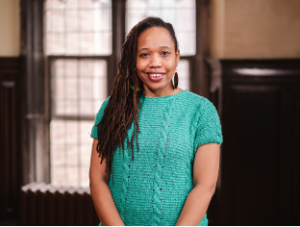The spring 2023 exhibition occurs simultaneously with a companion speaker series that features leading scholars whose work addresses some aspect of the special world and culture of the enterprise of slavery and the slave ship.
February 2 at 6:00 pm | Spring Exhibition Opening and Gallery Exhibit Speaker Series with Historian Marcus Rediker, University of Pittsburgh

Marcus Rediker, University of Pittsburgh
Marcus Rediker is Distinguished Professor of Atlantic History at the University of Pittsburgh. His “Histories From Below” have won numerous awards, including the George Washington Book Prize, and have been translated into seventeen languages worldwide. He is the author of The Slave Ship: A Human History (2007) and The Amistad Rebellion: An Atlantic Odyssey of Slavery and Freedom (2012), which was the basis for his prize-winning documentary film, Ghosts of Amistad: In the Footsteps of the Rebels, directed by Tony Buba. He is currently writing a book about escaping slavery by sea in Atlantic antebellum America. Rediker has won a number of awards for his work, such as the George Washington Book Prize (2008), OAH Merle Curti Award (2008), National Endowment for the Humanities Fellow (2005–06), American Council of Learned Societies Fellow (2005–06), Distinguished Lecturer, OAH (2002–08), International Labor History Book Prize (2001), OAH Merle Curti Social History Book Award (1988) and ASA John Hope Franklin Book Prize (1988).
March 8 at 6:00 pm (International Women’s Day) | Gallery Exhibit Speaker Series with Professor Sowande Mustakeem, Washington University, Author of Slavery at Sea: Terror, Sex, and Sickness in the Middle Passage

Sowande Mustakeem, Washington University
Most times left solely within the confine of plantation narratives, slavery was far from a land-based phenomenon. This book reveals for the first time how it took critical shape at sea. Expanding the gaze even more deeply, the book centers how the oceanic transport of human cargoes–infamously known as the Middle Passage–comprised a violently regulated process foundational to the institution of bondage. Sowande Mustakeem’s groundbreaking study goes inside the Atlantic slave trade to explore the social conditions and human costs embedded in the world of maritime slavery. Mining ship logs, records, and personal documents, Mustakeem teases out the social histories produced between those on traveling ships: slaves, captains, sailors, and surgeons. As she shows, crewmen manufactured captives through enforced dependency, relentless cycles of physical, psychological terror, and pain that led to the making–and unmaking–of enslaved Africans held and transported onboard slave ships. Mustakeem relates how this process, and related power struggles, played out not just for adult men but also for women, children, teens, infants, nursing mothers, the elderly, diseased, ailing, and dying. Mustakeem offers provocative new insights into how gender, health, age, illness, and medical treatment intersected with trauma and violence transformed human beings into the world’s most commercially sought commodity for over four centuries (via Amazon Review).
March 30 at 6:00 pm | Gallery Exhibit Speaker Series with Professor Lisa Lindsay, Chair, History Department, UNC-Chapel Hill

Lisa Lindsay
This presentation will focus on Lindsay’s work in progress on women as victims of the trade. Her previous book, Captives as Commodities, posits that, unlike any other system of commerce in world history, the primary commodities exchanged in the slave trade were people, and this fact has implications not only for how the trade was initiated, conducted, conceptualized, and concluded, but also for how we make sense of it in the present.
For, on the one hand, the Atlantic slave trade was indeed trade, and as such, it bears comparison with and was related to the expansion of a variety of global commercial networks. On the other hand, unlike other commodities driving cross-cultural exchange in world history, slaves were human, with all this implies about their vulnerability to pain and discomfort, their capacity to resist, their real or potential relationships with sellers and buyers, and–most fundamentally to those sellers and buyers–their labor power. Understanding the Atlantic slave trade thus requires studying economic and political history, dealing largely with those who bought and sold slaves, as well as the social and cultural history of slavers, the enslaved, and the societies they lived in and built.